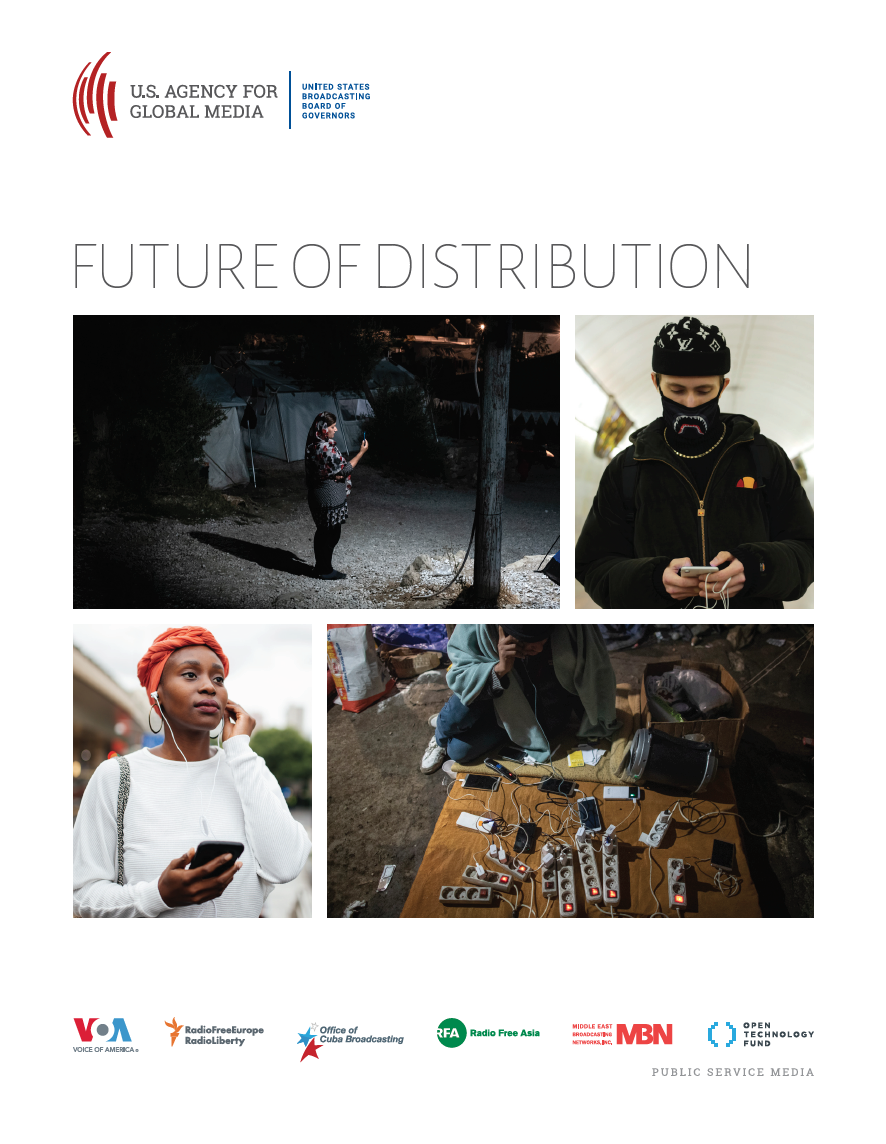An analysis of the future of distribution: The next frontier in delivering publicly funded global media

The networks of the U.S. Agency for Global Media (USAGM) serve more than 100 countries all over the world in 61 languages. Our target markets have one important thing in common: They do not have fully free media environments. Beyond that key requirement, our markets differ in significant ways, posing enormous challenges in delivering news and programming to intended audiences. To serve audiences on the media platforms they prefer, USAGM and our networks use technologies developed and popularized over the course of at least 100 years.
Shortwave and medium wave (AM) radio, for example, might strike the average American as relics of an earlier era, of little modern relevance, but USAGM networks still draw large audiences on these wavebands in parts of Sub-Saharan Africa and South Asia. Even in more developed countries, with ready access to electrical power and affordable mobile internet, television is often by far the most important source of news and information. Of USAGM’s 350 million weekly users, a full 201 million find us on television. Digital media offers unprecedented opportunities to reach users, engage them in conversation, and immerse them in customized experiences, but the internet is an incredibly fragmented place, where capturing users’ attention is an unending challenge. Each social media site or news portal has its own conventions and limitations, and requires significant knowledge and customization of each story to the platform’s specifications.
USAGM’s networks are rising to the challenge. While most consumers likely do not think of Instagram as a news destination, many USAGM services have found large and engaged audiences on the app, which they use to distribute short, visually appealing content like this VOA Indonesian explainer video on the use of smartphones to track coronavirus exposure. RFE/RL’s Uzbek Service has pioneered the use of secure mobile messaging app Telegram to crowd-source and distribute information. State officials, activists, and security forces anonymously share photos, videos, and screenshots with RFE/RL to use in reporting, which the Service then sends to subscribers in its extremely restrictive operating environment. The newest USAGM grantee, the Open Technology Fund, develops, funds, and promotes technologies to ensure that audiences can safely access our content.
To help drive continued innovation, USAGM’s “Future of Distribution” report examines the many ways we expect media in our markets to develop in the coming years, and lays out a framework for USAGM’s networks to respond. First, we must be strategic about the platforms we embrace, and the target audiences we seek to reach. As digital access expands and audiences become fragmented, our services will have to make sophisticated decisions about who they want to reach and how to reach them. Second, we must experiment with and capitalize on new technologies, from the currently-popular (messengers, streaming, or podcasts) to the emerging and cutting-edge (virtual reality and low-orbit satellites). Finally, we must always be cognizant of the threats to our ability to reach audiences, preparing back-up plans and partnering with like-minded organizations to address censorship in all its forms.

